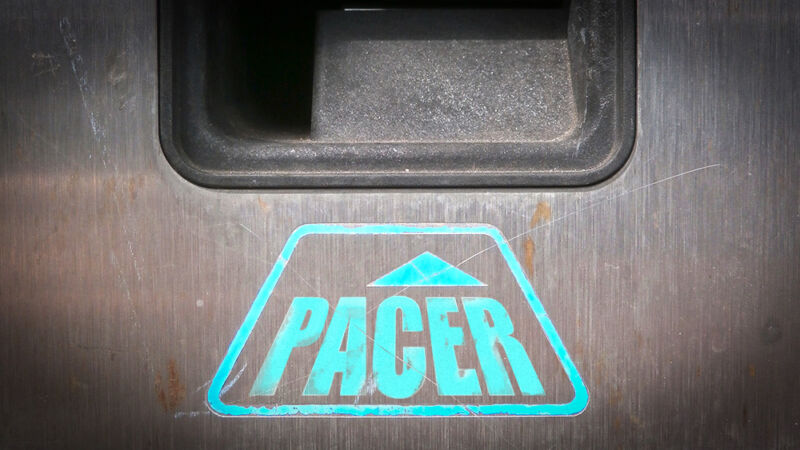
Refund time —
Appeals court charts a middle course between the plaintiffs and the government.

Aurich Lawson / Getty Images
A federal appeals court has ruled that the federal judiciary has been overcharging thousands of users for access to public court records. PACER, short for Public Access to Court Electronic Records, is an online system that allows members of the public (including Ars Technica reporters) to download documents related to almost any federal court case. For PDF documents, the site charges 10 cents per page—a figure far above the costs of running the system.
In 2016, three nonprofit organizations sued the judiciary itself over the issue. The class action lawsuit, filed on behalf of almost everyone who pays PACER fees, argued that the courts were only allowed to charge enough to offset the costs of running PACER. Over the last 15 years, as storage and bandwidth costs fell, the courts actually raised PACER fees from 7 cents to 10 cents. The courts used the extra profits to pay for other projects, like installing speakers and displays in courtrooms.
The plaintiffs argued that the courts were only allowed to charge the marginal cost of running PACER—which would be a fraction of the current fees. The government claimed that the law gave the courts broad discretion to decide how much to charge and how to use the money. In a 2018 ruling, a trial court judge charted a middle course. She ruled that some uses of PACER fees had exceeded Congress’s mandates. But she didn’t go as far as plaintiffs wanted by limiting spending to the operation of the PACER system itself.
The Federal Circuit gets its say
A three-judge panel of appellate judges heard oral arguments on the case in February. Those judges seemed a bit incredulous at the judiciary’s argument. Judge Raymond Clevenger seemed to be a leading skeptic:
Clevenger asked incredulously whether it would be legal for PACER fees to be used to replace “the curtains at the Supreme Court” and to buy “the Chief Justice’s new chair.”
“We’re redecorating all judges’ offices with gold plates,” he said sarcastically. Under the judiciary’s theory, he said, “there’s absolutely no remedy” for this kind of illegal spending.
Thursday’s ruling was written by Judge Todd Hughes and supported by the other two judges on the case. It confirms that the judges weren’t buying what the government’s lawyers were selling. The government had argued that the judiciary shouldn’t hear the case at all because the plaintiffs lacked standing. The Federal Circuit Appeals Court flatly rejected that argument, finding that if the government overcharged PACER users, then they have a right to sue to get their money back.
The appeals court upheld the lower court’s finding that some of the judiciary’s spending—including a pilot program for using PACER software for state courts in Mississippi, a system for communicating with jurors, and efforts to upgrade audiovisual technology in courtrooms—shouldn’t have been done with PACER funds. The government will likely have to issue refunds to PACER users to cover these misuses of PACER funds.
At the same time, the appellate court agreed with the trial judge that the plaintiff’s theory—that PACER fees could only be spent on costs directly related to serving PACER users—was too restrictive. According to the three-judge panel, the judiciary has latitude to spend PACER fees on any project that’s somehow related to distributing electronic docket information to the general public.
CM/ECF in the balance
One of the big open questions here is about CM/ECF, the electronic system that plaintiffs and defendants use to submit documents to the judiciary. In a sense, CM/ECF and PACER are two sides of the same system, since documents uploaded to CM/ECF become available for download by PACER users. However, CM/ECF isn’t available to the general public. And the courts would likely need such an electronic docketing system even if PACER didn’t exist.
So we can expect the plaintiffs in the case to argue that CM/ECF should be paid for some other way—perhaps by charging higher fees to litigants or by having Congress appropriate money from general tax revenues. They’ll argue that CM/ECF is only available to parties and their attorneys, not the general public, and hence isn’t a system for public access to court records.
The government, in contrast, is likely to argue that PACER and CM/ECF constitute a single integrated system, so it’s appropriate to use PACER fees to fund CM/ECF.
The Federal Circuit Appeals Court opted not to resolve that question in Thursday’s ruling. Instead, it sent the case back down to the trial court, where the judge will have to sort out exactly which uses of PACER fees pass the standards laid out by the appeals court.









